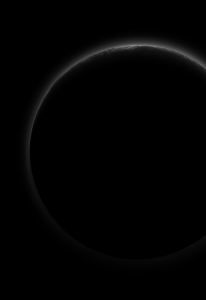
It has been yet another busy week of insightful and inspiring stories and reporting around the world. As editors of SpaceWatch Middle East the challenge is whittling down the quantity of good stuff out there to a handful of readings to share with our readers!
This week’s selection includes an interesting, and somewhat alarming, essay published in British newspaper The Guardian by British philosopher of science Jerome Ravetz, who argues that with the growth of science over the past century quality control has failed to keep up.
Ravetz writes, “It is clear that a combination of circumstances can go far to explain what has gone wrong. Systems of controls and rewards that had evolved under earlier conditions have in many ways become counterproductive, producing perverse incentives that become increasingly difficult for scientists to withstand. Our present problems can be explained partly by the transformation from the ‘little science’ of the past to the ‘big science’ or ‘industrialised science’ of the present. But this explanation raises a problem: if the corrupting pressures are the result of the structural conditions of contemporary science, can they be nullified in the absence of a significant change in those conditions?”
In The New York Times, Adam Frank, a professor of astrophysics at the University of Rochester, New York, writes, “Yes, There Have Been Aliens.”
This essay is a summary of a scientific paper co-authored by Frank and astronomer Woodrow Sullivan published in the journal Astrobiology titled, “A New Empirical Constraint on the Prevalence of Technological Species in the Universe.”
Frank argues that, “while we do not know if any advanced extraterrestrial civilizations currently exist in our galaxy, we now have enough information to conclude that they almost certainly existed at some point in cosmic history.”
In the United Kingdom, the House of Commons Science and Technology Committee published its Satellites and Space report that criticizes the British government for not providing political and strategic guidance to the UK’s burgeoning space sector.
The Committee writes:
The UK space sector has historically suffered from a lack of strategic direction and purpose. The UK’s first National Space Policy, setting out the Government’s high-level objectives for the sector, has been over half a century in the making. Its publication last year represented an important milestone but it is regrettable that it failed to include a clear, detailed vision of the capabilities, missions, and technologies the UK should be advancing. This was a missed opportunity which should not be repeated in the UK Space Agency’s forthcoming Civil Space Strategy.
The imprecision of the Global Positioning System (GPS) is apparently inspiring installation artists in London and New York City, according to American magazine The Atlantic that published a story titled, “The Existentialism of GPS,” by Geoff Manaugh.
Manaugh writes that the near ubiquitous availability of satellite navigation on everyday devices such as smart phones has led to strange errors and phenomenon. One British artist left his running app on his smart phone running while he slept in his apartment. The following morning the app, enabled by GPS, suggested that he had wondered around London when in fact he was fast asleep in his own bed. This phenomenon was dubbed ‘night-running’ by the British artist.
“If even something as stationary as an art gallery in Manhattan can appear to slide back and around again through the surrounding neighborhood,” writes Manaugh, “then, in a very real sense, the entire world is also always night-running, departing from its apparent fixedness without ever appearing to move. Your smartphone was in a different neighborhood last night, perhaps even stumbling through someone’s home or slipping across state borders.”
Lastly, Harsh Vasani of India’s Manipal University writes in The Diplomat about “India’s Anti-Satellite Weapons.”
Vasani writes that India possesses a number of strategic technologies that could be combined, if it so desired, to produce anti-satellite (ASAT) capabilities. Some analysts claim that India already possesses de facto ASAT systems, but, Vasani argues, “[T]he questions raised over India’s ASAT weapons capacity are doubtless important. Even if New Delhi does have an anti-satellite weapons capability, it will only be acknowledged if it comes out in the open with a successful test. But such a demonstration will come with its own costs. What would be the consequences if New Delhi decided to demonstrate its purported ASAT capability?”
See you next week!
The SpaceWatch Middle East editors.
 SpaceWatch.Global An independent perspective on space
SpaceWatch.Global An independent perspective on space

